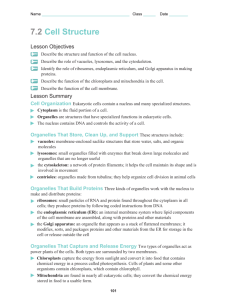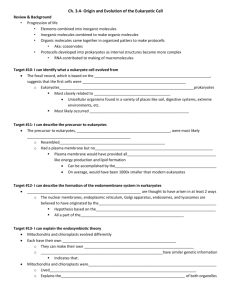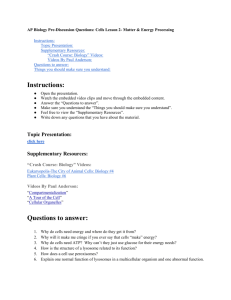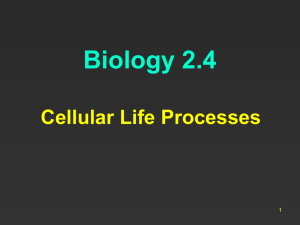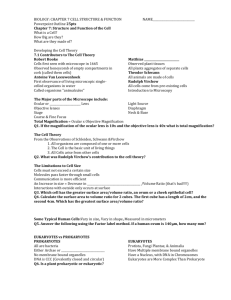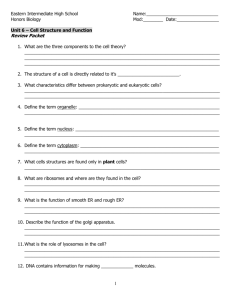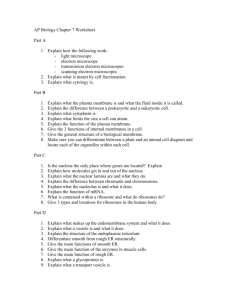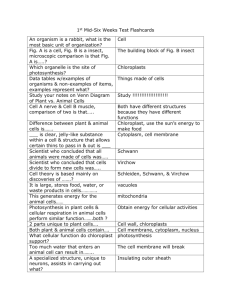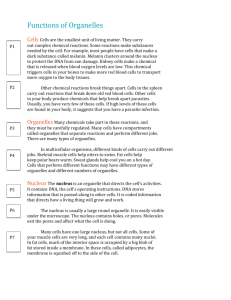013368718X_CH07_097-114.indd
advertisement
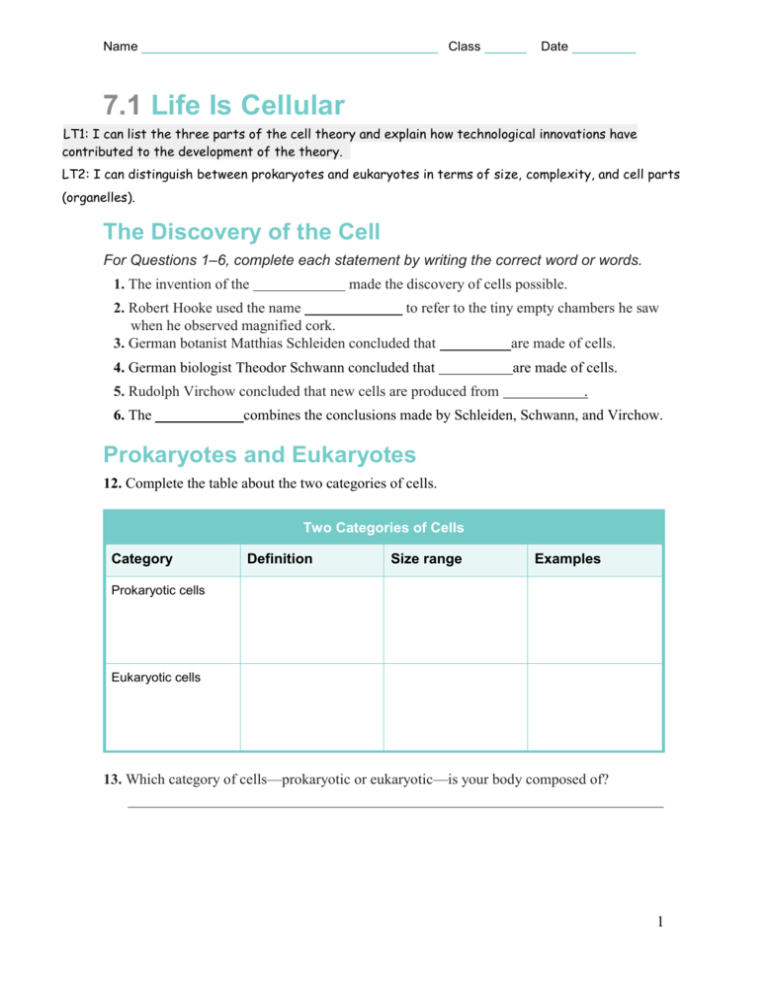
Name Class Date 7.1 Life Is Cellular LT1: I can list the three parts of the cell theory and explain how technological innovations have contributed to the development of the theory. LT2: I can distinguish between prokaryotes and eukaryotes in terms of size, complexity, and cell parts (organelles). The Discovery of the Cell For Questions 1–6, complete each statement by writing the correct word or words. 1. The invention of the made the discovery of cells possible. 2. Robert Hooke used the name to refer to the tiny empty chambers he saw when he observed magnified cork. 3. German botanist Matthias Schleiden concluded that are made of cells. 4. German biologist Theodor Schwann concluded that 5. Rudolph Virchow concluded that new cells are produced from 6. The are made of cells. . combines the conclusions made by Schleiden, Schwann, and Virchow. Prokaryotes and Eukaryotes 12. Complete the table about the two categories of cells. Two Categories of Cells Category Definition Size range Examples Prokaryotic cells Eukaryotic cells 13. Which category of cells—prokaryotic or eukaryotic—is your body composed of? 1 Name _______________________________ Class Date 7.2 Cell Structure LT3: I can identify the structure and function of the following cell organelles: cytoplasm, nucleus, vacuole, lysosome, cytoskeleton, centrioles, ribosomes, ER, Golgi, chloroplast, mitochondria, cell membrane, cell wall. LT4: I can relate the function of cell parts to the following processes respiration, photosynthesis, protein synthesis, and cell reproduction in terms of the organelles involved in those cellular processes. Cell Organization 1. Describe the relationship between the cytoplasm and the nucleus of a cell. 2. What does the term organelle mean literally? For Questions 3–4, refer to the Visual Analogy comparing the cell with a factory. 3. VISUAL ANALOGY In the visual analogy of a cell as a factory, what two functions of the nucleus are represented? How are these functions illustrated? 4. What is another possible analogy that could be compared with the structure and function of a cell? Organelles That Store, Clean Up, and Support 5. What are vacuoles? 6. What are the two roles of the central vacuole in plant cells? 2 7. How are contractile vacuoles different from other types of vacuoles? 8. In the diagrams of the animal cell and the plant cell, label the structures indicated by the lines. 9. What is the role of lysosomes in the cell? Why is this a vital role? 10. Which structures of the cytoskeleton are found in animal cells but not in plant cells? 11. What other structures of the cytoskeleton would show the same pattern of microtubules as a flagellum? 103 3 Name Class Date Organelles That Build Proteins 13. What are ribosomes? What do they do? 14. In which organelle are the lipid components of the cell membrane assembled? 15. What is the difference between rough ER and smooth ER? 16. Using the cell as a factory analogy, describe the role of the Golgi apparatus in cells. 17. Suppose a cell’s Golgi apparatus does not function properly. How might this problem affect other cells? Organelles That Capture and Release Energy 18. Complete the Venn diagram to compare and contrast chloroplasts and mitochondria. Mitochondria Chloroplasts 104 4 Name Class Date For Questions 19–22, write True if the statement is true. If the statement is false, change the underlined word or words to make the statement true. 19. Chloroplasts are never found in animal cells. 20. Unlike chloroplasts, mitochondria are surrounded by a double membrane. 21. Nearly all of the mitochondria in your cells were inherited from your mother. 22. Both chloroplasts and mitochondria lack genetic information in the form of DNA. Cellular Boundaries For Questions 23–25, complete each statement by writing the correct word or words. 23. Most cell support and protect cells. are porous to water and other materials but strong enough to 24. Nearly all of the plant tissue called is made up of cell walls. 25. Besides supporting and protecting a cell, the cell membrane and leaves the cell. what enters 26. Complete the diagram of a section of a cell membrane. Then, on the line below the diagram, write the name of the model that describes the cell membrane’s structure. Apply the Big idea 27. What is the function of vesicles in the synthesis of proteins and the release of those proteins outside the cell? 5

